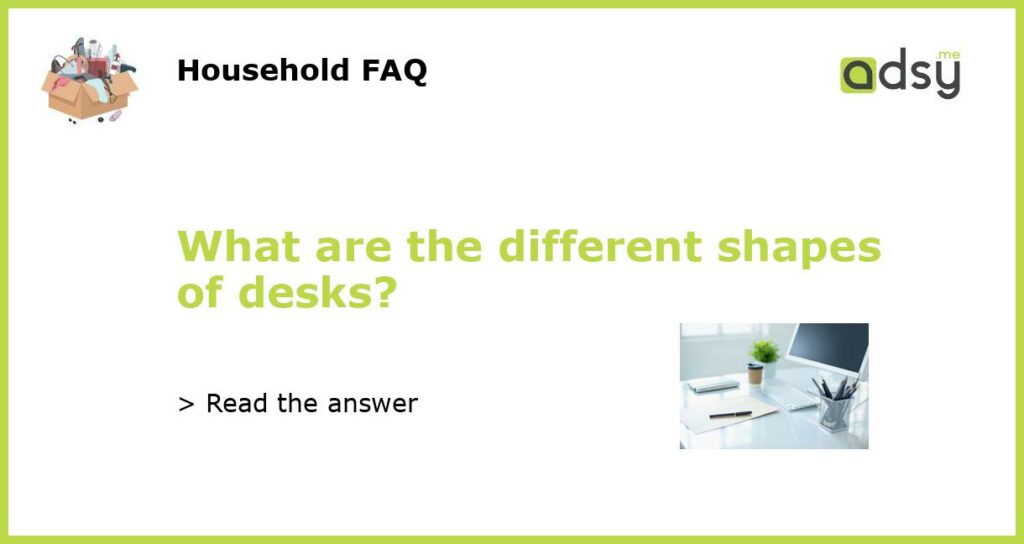The Different Shapes of Desks
Desks come in a variety of shapes to suit different needs and preferences. Whether you are looking for a desk for your home office or workplace, it’s important to understand the different shapes available and how they can enhance your productivity and comfort. In this article, we will explore five common shapes of desks and their unique features.
Rectangular Desks
Rectangular desks are the most common and traditional shape of desk. They are popular for their simplicity and versatility. A rectangular desk provides a large surface area, allowing you to spread out your work materials and comfortably place your computer or laptop. This shape is ideal for those who need plenty of space for writing, drawing, or other hands-on activities. Rectangular desks are available in various sizes, making it easy to find the perfect fit for your workspace.
L-Shaped Desks
L-shaped desks, as the name suggests, have an L-shaped configuration. These desks offer a corner section that provides additional surface space. The L-shape design is particularly beneficial for those who need separate areas for different tasks, such as a computer workstation and a writing or drawing area. This shape also allows for easy access to multiple devices or tools without having to move too far from your main work area.
L-shaped desks are popular in offices and home offices where space is limited but maximum functionality is required. They provide ample surface area while utilizing the corner space efficiently. Additionally, L-shaped desks often come with built-in storage options, such as drawers or shelves, maximizing storage capacity in a compact design.
U-Shaped Desks
U-shaped desks are similar to L-shaped desks but with an additional section that completes the U shape. This shape provides the most surface area out of all the desk shapes, making it ideal for executives or individuals who need a large workspace. U-shaped desks allow for easy organization and access to multiple tasks simultaneously, while also providing ample storage space.
The U-shape design is perfect for professionals who require multiple monitors, a large working surface, and substantial storage space for files and documents. Additionally, U-shaped desks often come with built-in hutches or overhead storage to keep your workspace tidy and organized.
Corner Desks
Corner desks are designed to fit in the corner of a room, making them an excellent choice for small spaces. These desks make efficient use of corner areas that are often left unused. Corner desks come in various sizes and configurations, ranging from a simple triangular shape to a larger, more multifunctional design.
Corner desks are popular in home offices, bedrooms, or any space where you need a functional workspace without taking up too much room. They provide a compact and efficient layout that allows you to have a dedicated workspace while maximizing floor space.
Standing Desks
Standing desks are a modern trend in office furniture, designed to promote a healthier and more active work environment. These desks can be rectangular, L-shaped, or any other shape with an adjustable height feature. Standing desks allow you to switch between sitting and standing positions, reducing the negative effects of prolonged sitting and promoting better posture.
Standing desks are ideal for individuals who spend long hours at their desks and want to improve their overall well-being. By standing periodically throughout the day, you can increase blood flow, burn calories, improve focus, and alleviate certain ergonomic issues associated with sitting for extended periods.
In conclusion, the shape of your desk can significantly impact your comfort, productivity, and overall work experience. Whether you prefer a traditional rectangular desk, an L-shaped or U-shaped desk for extra surface area, a corner desk for space efficiency, or a standing desk for improved health, there are plenty of options to choose from. Consider your workspace needs, available space, and personal preferences before selecting the right desk shape for you.






